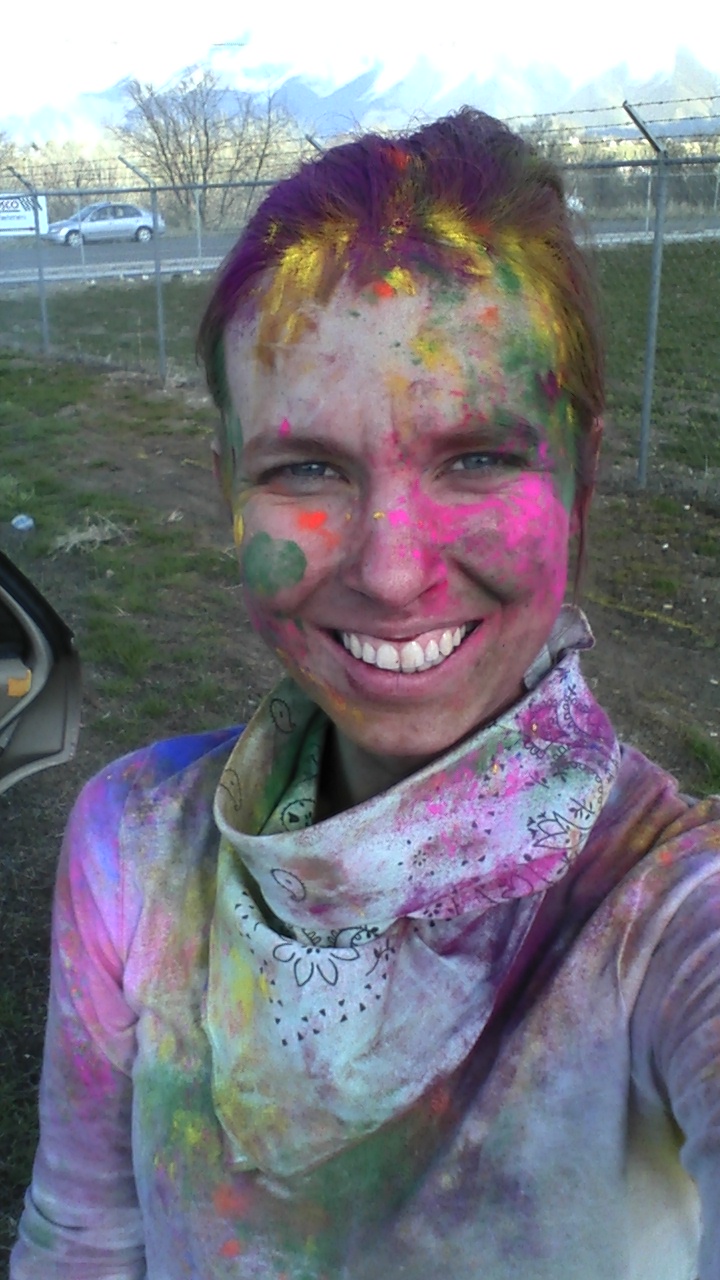Color Me Pink: the Festival of Colors dyes the world in brighter hues
Last Saturday, strangers ran their hands down the side of my face, put their fingers through my pony tail and blew in my face. And I thanked them for it.
Where do we draw the line when showing love to strangers?
Obviously, we act differently around strangers than we do around friends on campus. It’s to be expected. We don’t walk up and hug random strangers. We don’t touch passerby’s faces with our hands. The biggest gesture of love strangers show one another is a smile at most. (Excluding, perhaps, True Aggie night.)
But an interesting phenomenon occurs when strangers come together at common events such as rallies or concerts or the aftermath of tragedies. Emotions run high. People feel vulnerable. Strangers connect.
Such is the experience when one attends Holi, also known as the festival of colors or the festival of sharing love.
The Hindu festival of Holi is a two-day spring event that is celebrated mainly in India and Nepal. In Utah, thousands celebrate Holi on the steps of the Radha Krishna Temple in Spanish Fork. Interestingly, if you look up “Holi” on Wikipedia, the key picture is not from India or Nepal, but from this event in Spanish Fork.
The most noticeable characteristic of the festival? Color. Everywhere.
Colored chalk powder dusts everything at the temple grounds, including the people. Everyone is fair game. Old, young, male, female, rich, poor, friend or stranger are all covered in colored chalk powder. Green, blue, pink, yellow and orange clouds of powder rise above the crowd. Break out the gas masks.
I was an etic observer of Holi until last weekend. I’d never attended before. I’d barely even heard about it.
I remember as my friend and I walked toward the festival, we passed groups of people leaving the festival. Often these people had smiles on their faces, but others had the stoic look of surviving a kaleidoscope apocalypse. Maybe they got too much dust in their eyes.
Holi celebrates the arrival of spring and an end of winter, a time for strangers to meet, laugh, forgive and give thanks. In the case of its origin story, Holi also symbolizes the triumph of good over evil.
The legend tells of demon King Hiranyakashipu, who wanted everyone to worship him. However, his son, Prahlad, refused and devoted himself to another god. In punishment, Hiranyakashipu commanded his sister, the demon Holika, to take Prahlad and walk into a burning fire. Holika thought she had protection for the fire, but Prahlad was saved by the god he worshiped and demon Holika was burned instead. Thus, Holi also celebrates triumph of devotion.
I don’t think many Holi celebrators know the legend of Holika and Prahlad, but that doesn’t stop people from chanting in unison “peace, love and unity” while throwing color into the air.
Come festival time, I was splattered with colors. Mostly pink.
At the festival, shirtless teenagers held up cardboard signs with the words “free hugs” and “free kisses.” Laughing toddlers rode on their father’s shoulders. Crowd surfers rode a wave of hands throughout the day.
Most people wore handkerchiefs or masks to keep out the dust. Performers stood on a stage facing the temple, singing songs and leading chants. The walls of the temple were covered with colored hand prints. Everyone was colored an equal measure of rainbow.
Honestly, I was taken aback at how quickly strangers surrendered their prejudices and barriers concerning one another. It was as if everyone made an unspoken agreement to forget discrimination and focus on painting participants like human tie-dye. How quickly, when given a safe chance, we renounce our biases concerning one another.
My friend threw yellow color at one woman as she passed us and the woman spread her arms wide so my friend had a good shot. Such trust is rarely given on any other occasion.
In our world of trouble and terror, we say it’s hard to show love to strangers. We say it’s hard to trust one another. I agree. But just because something is hard doesn’t mean it’s impossible. Holi festivals prove that.
Just because the festival of showing love ends at 5 p.m. on a Saturday afternoon, it doesn’t mean our love for others should fade. It doesn’t mean we should fade back into our prejudices. We should stand out brilliantly against the dark hue of the intolerances as bright spots of undiscriminating love.
If you closely at my hair, it’s still colored pink in odd spots. Not that I didn’t try to wash it out. I don’t remember which stranger put it there, but it doesn’t matter. The color will fade. I hope it doesn’t fade too quickly.
—ashley.ruth.stilson@aggiemail.usu.edu

